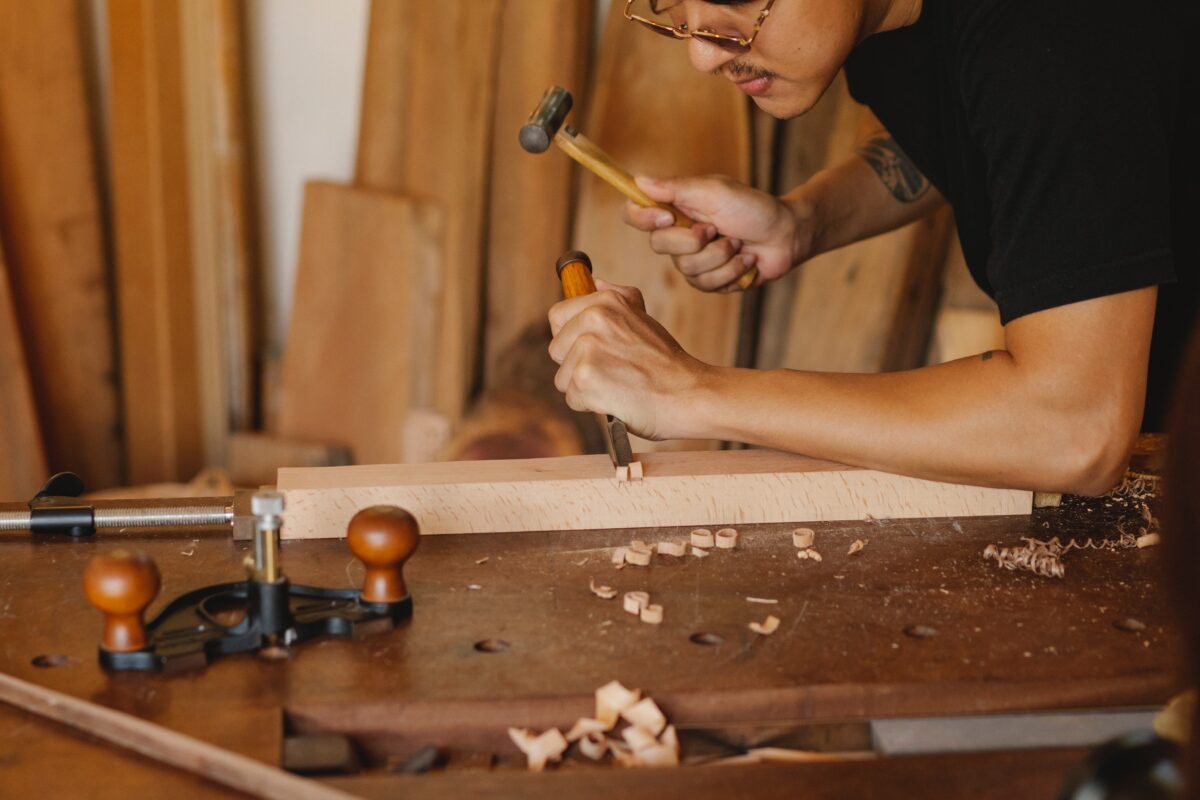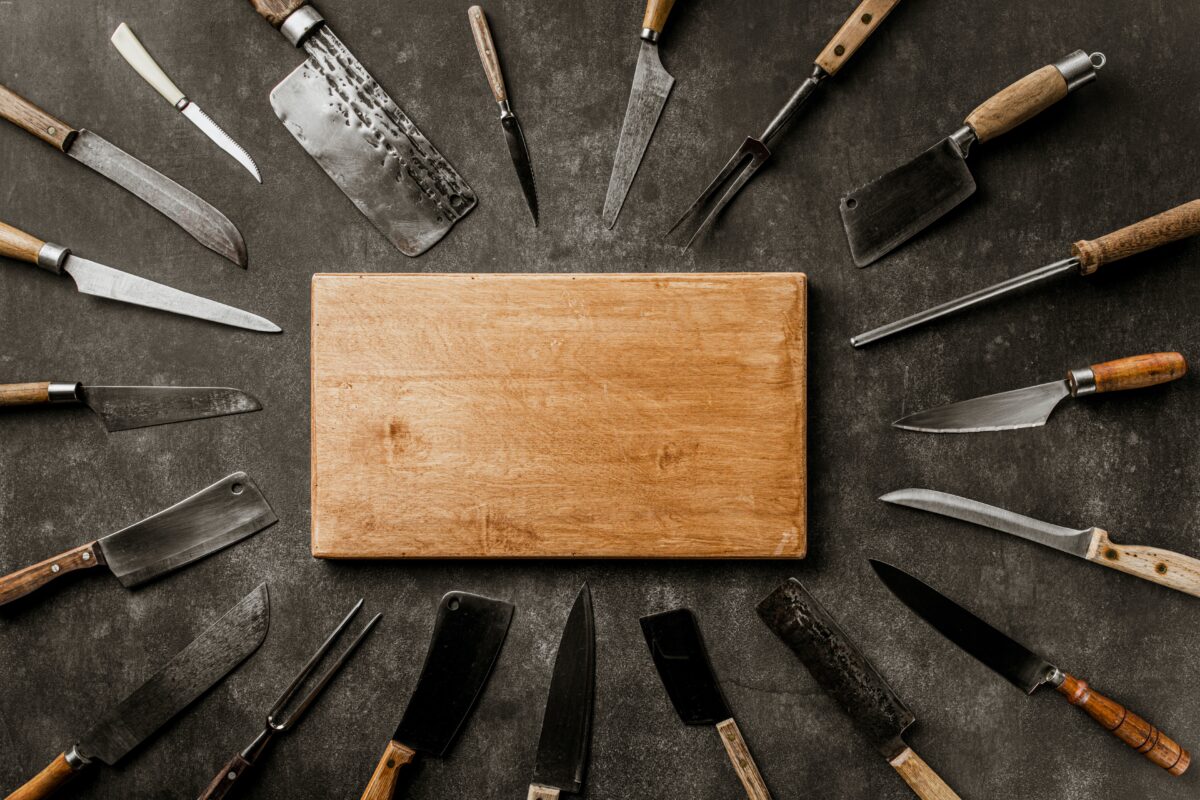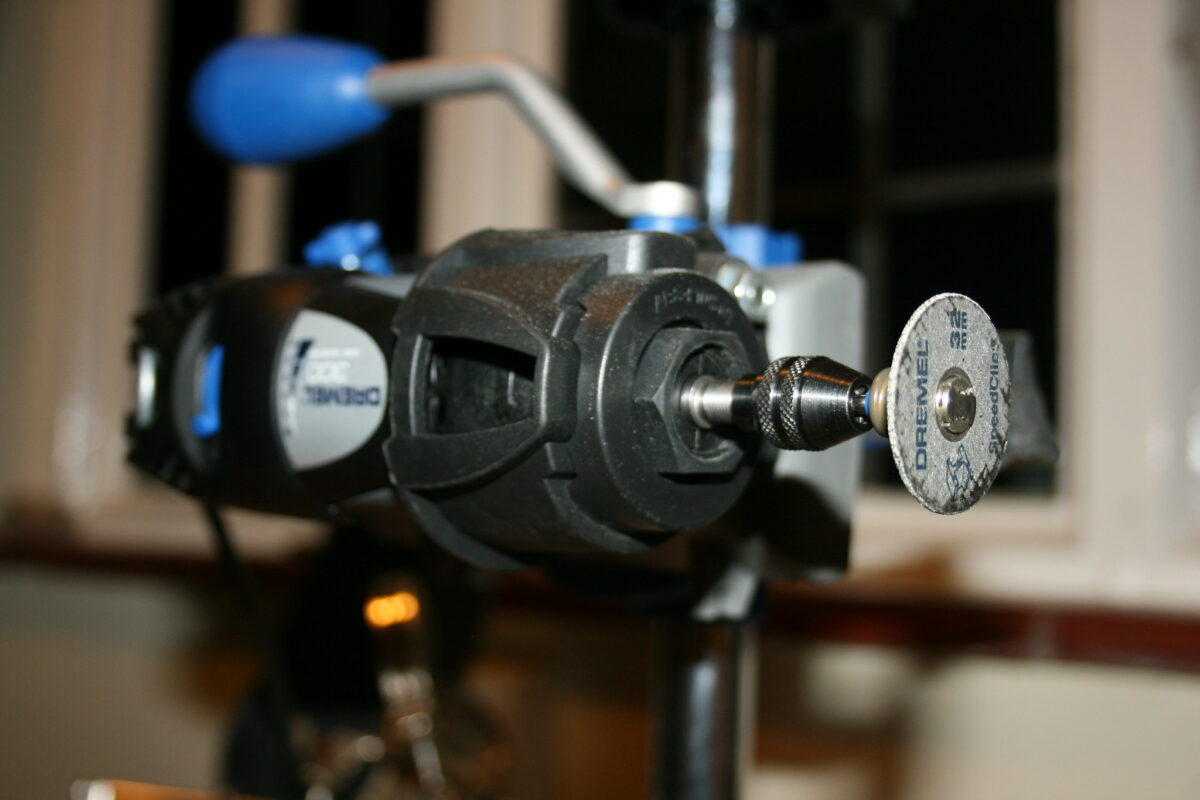Whether you are a homeowner working on projects or a crafter looking to cut patterns out of wood, not having access to a saw and a drill can bring your progress to a screeching halt. I have been there many times myself. So, how to cut wood without a saw or drill?
As a long-time DIY enthusiast, I have picked up a few tricks for cutting wood using tools you likely already have on hand. In this article, you will learn a handful of methods that will allow you to keep moving on your woodworking projects even without saws and drills available.
Contents
How to Cut Wood Without a Saw or Drill
If you don’t have a saw or drill, you can use a chisel, scraper, knife, or a Dremel tool to cut wood. Make sure to choose the appropriate tool depending on the wood’s thickness and the angle you need to cut.
There are several ways to chop wood when neither saws nor drills are at hand that anyone from novice to experienced crafters can utilize. Here, I’m going to discuss the proper techniques so you can use other tools to cut wood.
Cutting Wood Using a Chisel
Chisels are useful woodworking tools for detailed carpentry work, such as cutting joints, hinges, and other fine details in wood. A wood chisel can make clean and accurate cuts in the wood when used correctly. These are the steps to follow when working with a chisel on wood:

- Choose the right chisel for the job: Pick a width that suits the size of the cut you need to make. Use a bevel-edged chisel for general-purpose wood chiseling.
- Prepare the wood: Clamp the wood in place on a sturdy work surface. Ensure the cut area is accessible and elevated above the work surface.
- Set the chisel at the desired angle: For a straight cut, hold the chisel perpendicular to the wood surface. For an angled or curved amount, tilt the chisel at an angle.
- Tap the chisel to score the cut: Use a wood mallet to tap the end of the chisel to achieve the cut line in the wood.
- Steadily chisel along the cut: Apply firmer mallet taps or push the chisel with steady pressure to carve along the scored cut line. Remove waste wood as you go.
- Refine and smooth the cut: Pare away the remaining wood with light taps to refine and straighten the cut. Flip the chisel over and pare across the cut to smooth it.
Though cutting angles with circular saw are faster for making big cuts, hand chisels have advantages for detailed woodwork. A sharp chisel can make precise, clean cuts with minimal waste. Mastering the simple hand chisel allows crafters to cut perfect joints and customize details.
Cutting Wood Using a Scraper
Scrapers are useful woodworking tools for smoothing and shaping wood surfaces. A scraper’s thin, sharp blade can slice off thin layers of wood in a controlled manner. Scrapers excel at making fine adjustments and removing material precisely.
Here are the steps for chopping wood with a scraper:
- Select the proper scraper: Choose a curved or straight scraper to match the surface. Verify the scraper blade is sharp.
- Prepare the wood surface: Secure the wood to prevent movement. Ensure the area to be scraped is accessible.
- Set the scraper angle: Hold the scraper perpendicular to the wood for straight smoothing. Angle the scraper for contouring or shaping.
- Pull the scraper downward: Apply firm, even pressure as you pull the scraper along the wood grain. Remove only thin shavings of material.
- Check for smoothness: Run your fingers over the area and feel for bumps or grooves. Make additional scraper passes as needed.
- Clean the surface: Use a soft brush or compressed air to remove wood dust and debris. Check for remaining rough spots.
Scrapers allow for fine control over the shaping and finish of wood pieces, which is also why I normally use scrapers to cut rocks when I don’t have saws. The thin, flexible blades can contour along curves and produce a smooth surface.
Cutting Wood Using a Sharp Knife
Cutting wood with a sharp knife requires care and proper technique to achieve clean cuts and avoid injury. Selecting the right type of knife for the job, preparing the wood, and employing proper cutting motions are crucial to success. Here is how to do it:

- Choose the right knife: Select a sturdy, sharp knife with a thick blade. The length should allow you to make cuts through your pieces of wood.
- Prepare the wood: If cutting long boards, secure them so they do not move. For smaller pieces, hold them firmly. Make sure there are no nails or defects in the cutting path.
- Position yourself safely: Keep your free hand away from the cutting area. Stand balanced with your feet shoulder-width apart.
- Make shallow slice cuts: Do shallow cuts in the direction of the wood grain. Use the blade’s full length in long, smooth motions without twisting or jerking the knife.
- Control the knife: Use just enough downward pressure so the blade slices through the wood cleanly. Let the sharpness of the blade do the work.
- Work carefully: Rushing increases the risk of slipping and injuring yourself. Take your time to cut precisely.
- Keep your knife sharp: A dull blade requires more force and is prone to slip, posing safety risks. Hone or sharpen your knife regularly.
When you think it’s hard to cut a wood with a sharp knife, you will not believe you can also cut a brick in half without a saw.
Cutting Wood Using a Dremel Rotary Tool
With the right attachment, a Dremel rotary tool can chop wood accurately, which may be challenging with larger saws. The Dremel is a versatile tool for cutting wood in an curved, straight, or angled pattern when used with the appropriate attachment bit, cautious handling, and good technique. Here are the steps for getting that:
- Choose the proper cutting bit: Use a reinforced cut-off wheel for straight cuts; use a high-speed cutter for detail work. Select the appropriate size for your project.
- Insert the bit: Place the bit into the Dremel chuck and tighten it. Check that it is completely inserted.
- Wear safety gear: Wear safety glasses to keep flying debris out of your eyes. To avoid breathing wood dust, wear a mask.
- Clamp the wood: Brace the wood piece tightly to prevent it from moving during cutting. To secure it, use clamps or a vise.
- Operate the Dremel: Before contacting the wood, allow it to reach full speed and carefully move it into the cut. Allow the bit to do the work by applying light, even pressure. Keep the bit perpendicular to the wood to provide a straight and even cut edge.
With the right Dremel bit, you can produce straight, splinter-free cuts in various types of wood. Its small size allows for greater control and accuracy than lumber saws for delicate woodworking jobs. It is a handy tool to have for specialty cut jobs unlike drill bits that fall out.
Related Questions
What Is the Easiest Way to Cut Wood?
Generally, using a saw or drill is the easiest way to cut wood. If you don’t have these power tools, use a chisel, scraper, sharp knife, or a Dremel rotary tool instead.
Can You Cut Wood With Scissors?
Although cutting thin or soft bits of wood with scissors is conceivable, it could be more efficient and practical. While they might be able to cut them, doing so would take a long time, involve a lot of force, and might even harm the scissors.
How Do You Cut Wood Quietly?
You can cut wood quietly by avoiding using power saws or drills. A good alternative is to use a chisel, scraper, or sharp knife to prevent noise.
Conclusion
With just a few simple, handy tools and some creativity, you can cut and shape wood in endless ways like cutting blinds without relying on saws or drills. Mastering traditional woodworking skills brings immense satisfaction and can change how you approach future projects.

